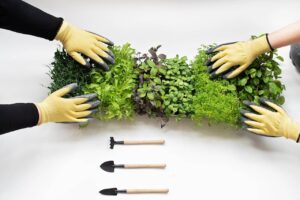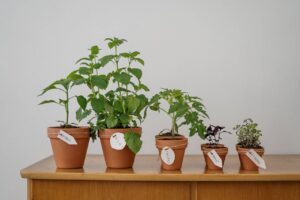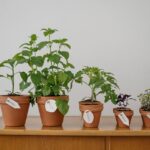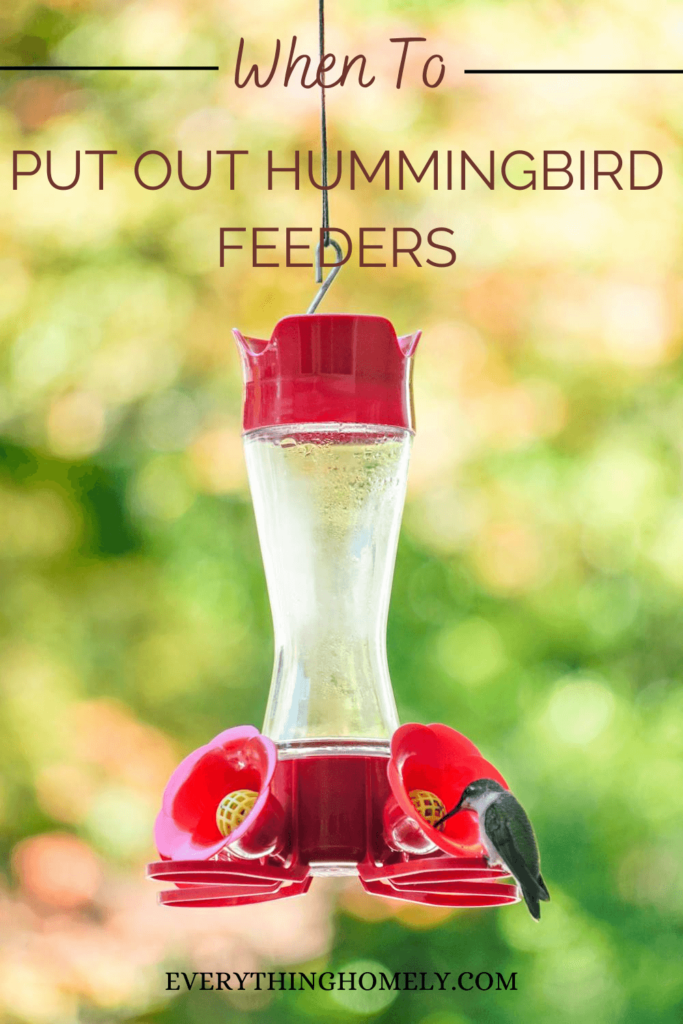
Hummingbirds are fascinating to watch. Like the whir of their tiny wings, they create quite a buzz among bird watchers. After a long winter, the sun becomes warmer. If you are a bird lover then you must be eagerly waiting for them to come in your yards. We are sure you must have the simple question of when to put out the hummingbird feeders.
These birds are beautiful and one of a kind after all. This is the only bird that can fly forward, backward, and vertical The annual arrival of these energetic fliers is truly something to celebrate. Let’s dive into the basics of welcoming this bird in your garden.
Why Do Hummingbirds Migrate?
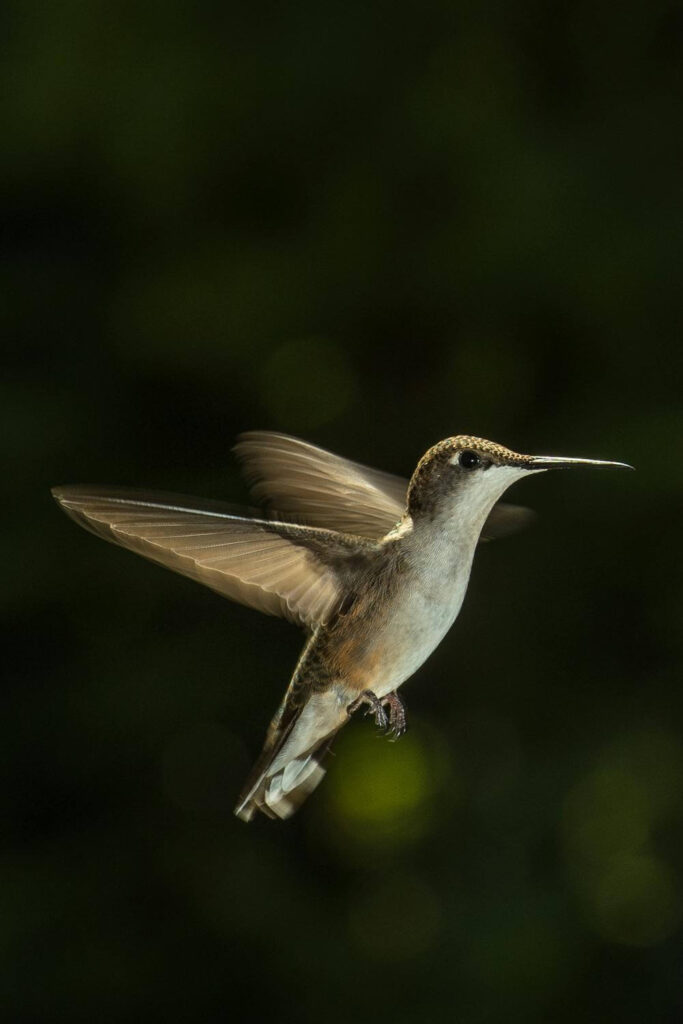
Hummingbirds embark on two migrations, one is north and the other is south. Their spring migration north from South America and Mexico to Canada is a solitary journey. They travel thousands of kilometers.
They travel around twenty-five kilometers each day. However, during migration, they can travel even five hundred miles in a single day. For traveling they use their tailwinds to reach faster.
It consumes less energy and body fat. Their goal is to get the breeding ground early enough in the best feeding grounds.
In late winter and early spring, they migrate north to breeding grounds in the United States and Canada.
It offers an escape from the tropics, where competition for food can be intense. In the North, the food supplies are abundant. The excessive cold season adversely affects them.
This cycle of advancing and retreating with the season is the basis for their migration.
When Do They Start Migrating
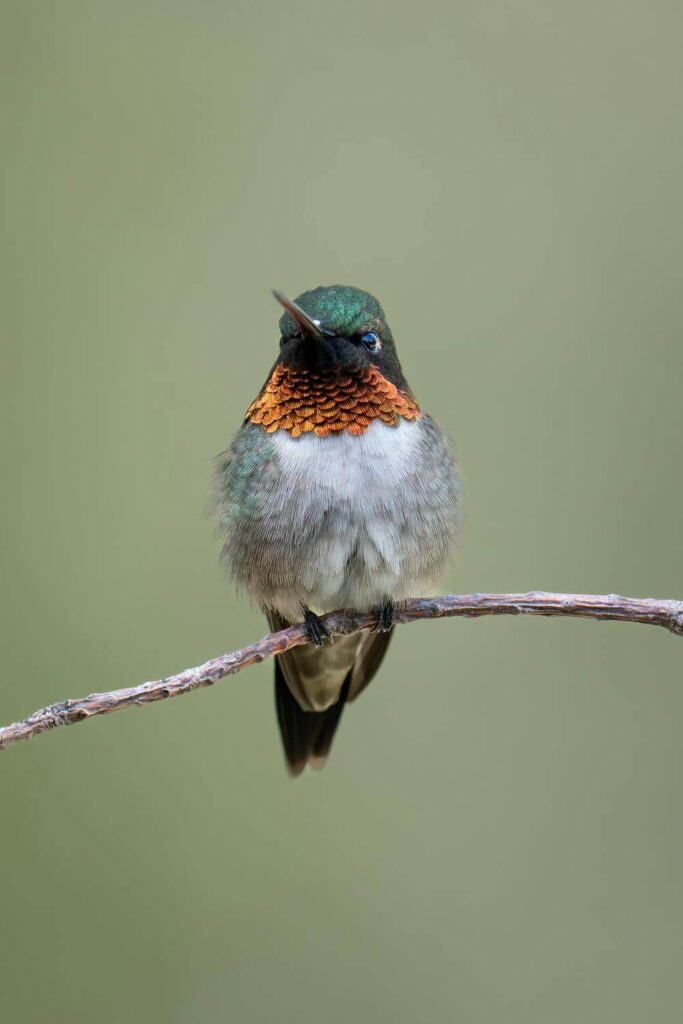
Their migration can start in February in Mexico and finish in mid-May in Canada and Alaska. There are around 17 species that migrate into the US and continue to Canada.
These migratory birds prefer warmer weather. The best time for their arrival is between March to May. Their arrival varies from region to region. They reach the Gulf Coast by late February or March and move northward by mid to late May.
In the eastern US, they arrive between March to May. In the southeastern states like Florida, they are visible in February and March. Some hummingbirds in southwest Mexico begin their spring flight in January. In southwestern states like Arizona, New Mexico, and Texas they remain all year round or migrate in March or April.
They move to North Mexico by December. The hummingbirds reach coastal California and southern Oregon around January or February. In the mountain state, they reach by mid-May. In the North and Midwest, they are visible in late April or mid-May.
When To Hang The Bird Feeders
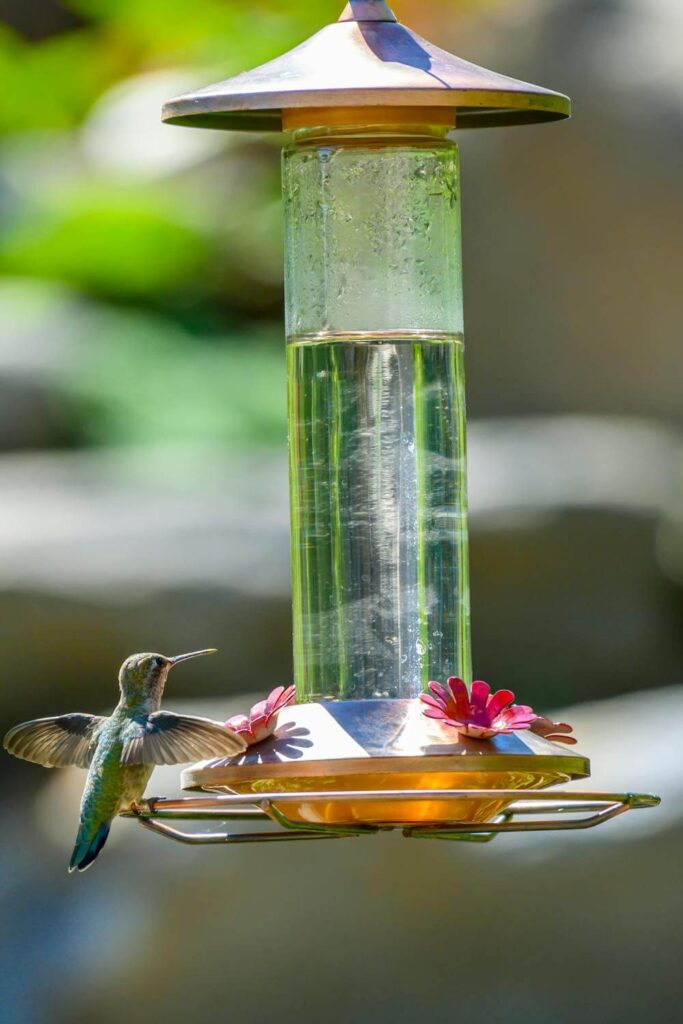
When the hummingbird’s feeders are hung before they start arriving, there are chances of viewing the first bird.
It is a good idea to hang the feeders about two weeks earlier before they arrive. This gives them time to discover and visit regularly.
To get some much-needed food immediately after a long journey is an enjoyment for the birds. An energy boost helps them get on track for a successful breeding season.
The feeders should be hung in the best identifiable places. These feeders should be cleaned regularly to prevent other insects.
This northern migration aligns with the bloom time of spring flowers. The best way to help them is to plant lots of flowering native plants.
The birdfeeder filled with homemade nectar is another alternative to attract them to the yard.
A nectar feeder is a help for them if they do not reach at the bloom time. It encourages them to return to the garden again and again.
Selecting The Bird Feeders
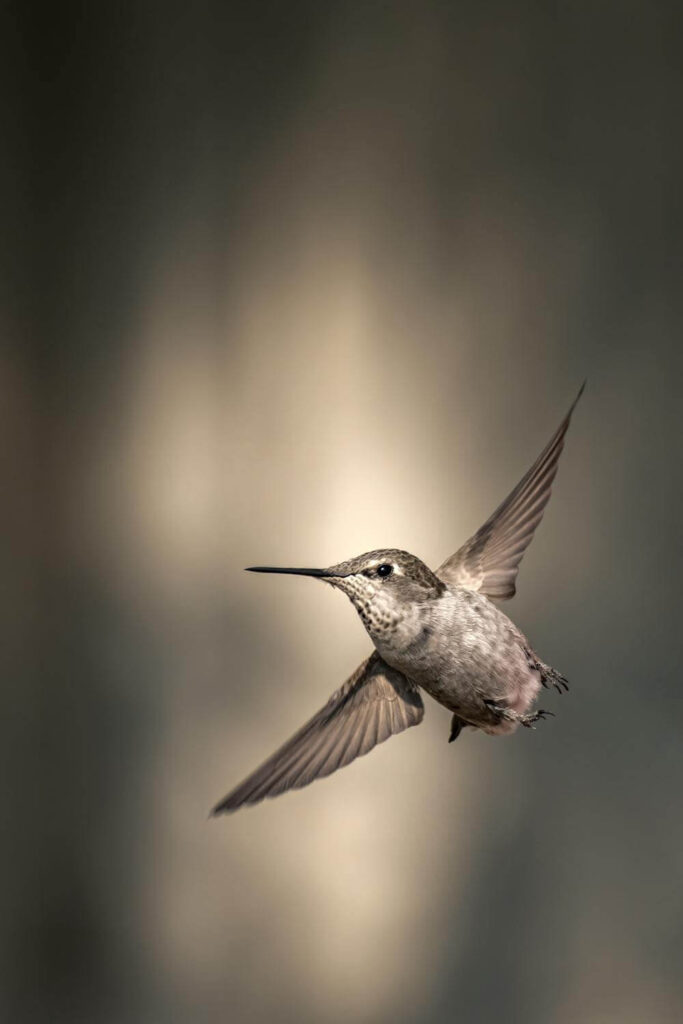
The hummingbirds like red and yellow flowers. The best choice to select the feeders is red.
The yellow color bird feeders attract bees. Bees and hummingbirds do not adjust at the same feeders.
To avoid the conflict between bees and hummingbirds the best option is to go with the red color attractive hummingbird feeders.
Designer bird feeders are available in the stores with attachments of attractive artificial flowers.
The feeders come in various designs like hanging or stacked designs in recycled leak-proof blown glass materials.
These are long-lasting feeders. There are handheld and window hummingbird feeders also. These feeders are also available in plastic materials in attractive designs and various creative options.
The Nectar Preparation
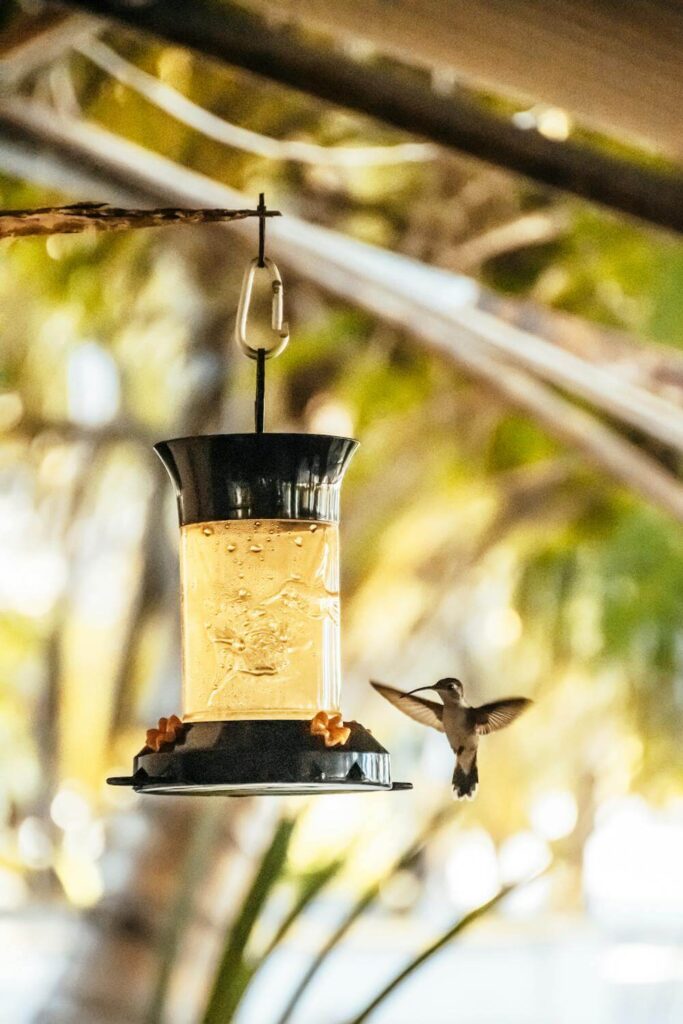
These little gems like nectar-filled blooms especially red and tube-shaped flowers.
For the bird feeders, homemade nectar can be prepared. For this artificial nectar preparation, boil four cups of water in a stainless steel pan. This aluminum pan is not advisable to use.
Add one cup of table sugar. Stir the solution till all the sugar is completely dissolved. Wait till the mix is cooled.
This solution is ready to be poured into the well-cleaned feeders. It is very important to note not to use honey, any artificial sweetener, or any other sugar substitute. The excess mix can be stored in the refrigerator for two weeks.
For filling the feeders the mix should be brought to room temperature. This homemade mix should not be stored for a very long time. If there is fermentation or mold, it is better to discard it. Do not use any red color in the mix. Nectar made with red dye is not good for hummingbirds.
Keep the feeder clean and refill it in short intervals. Do not fill the feeders completely to prevent the waste of mix.
They can be filled about one-third and when the quantity is less it can be supplemented. Hanging the feeders in light shade prevents spoiling nectar rapidly.
The hummingbird feeders work best in conjunction with nectar-rich native plants.
These birdfeeders should be removed when the weather is not favorable. If there is rain or snowfall it is better to remove them from their place and keep them in a safe protected area.
They should be kept away from their place when the spring season is over and the arrival of the hummingbirds has stopped.
Final Thoughts
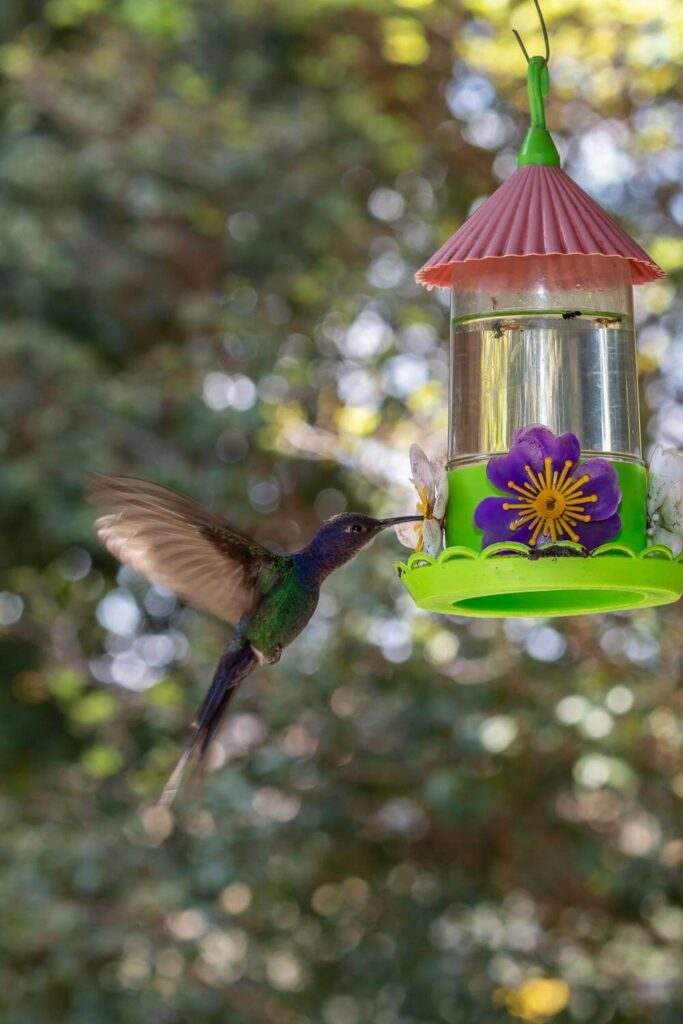
Hummingbirds are our welcome visitors in the yard during the spring season.
These beautiful tiny birds migrate to warmer zones to keep them protected from extreme winter.
Their arrival varies in different regions. But in most of the regions, they arrive between March to May. This is the answer to the query when to put out the hummingbird feeders.
These tiny little gems consume the nectar of flowers. We can provide them with homemade nectar in the feeders to attract them to the yard.
The method of preparation is quite simple and we can store the mix in refrigerators for two weeks. It is a good idea to plant the flowers of their choice to attract more number of these lovely hummingbirds.




